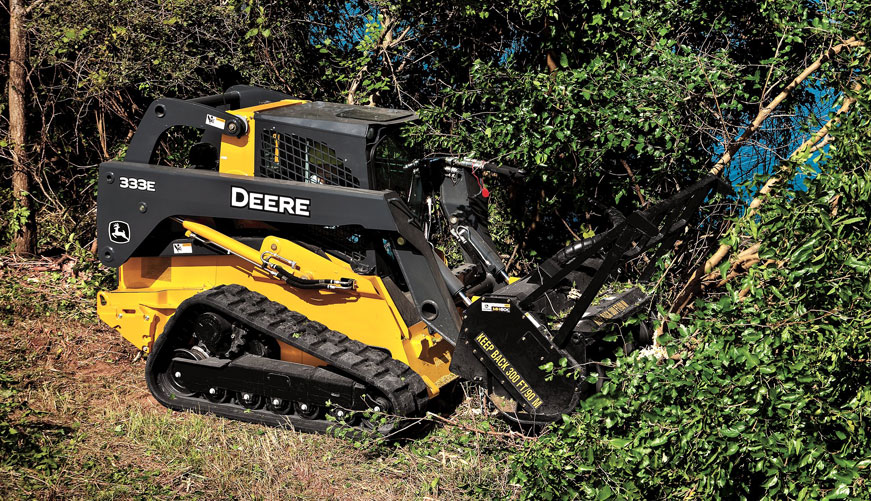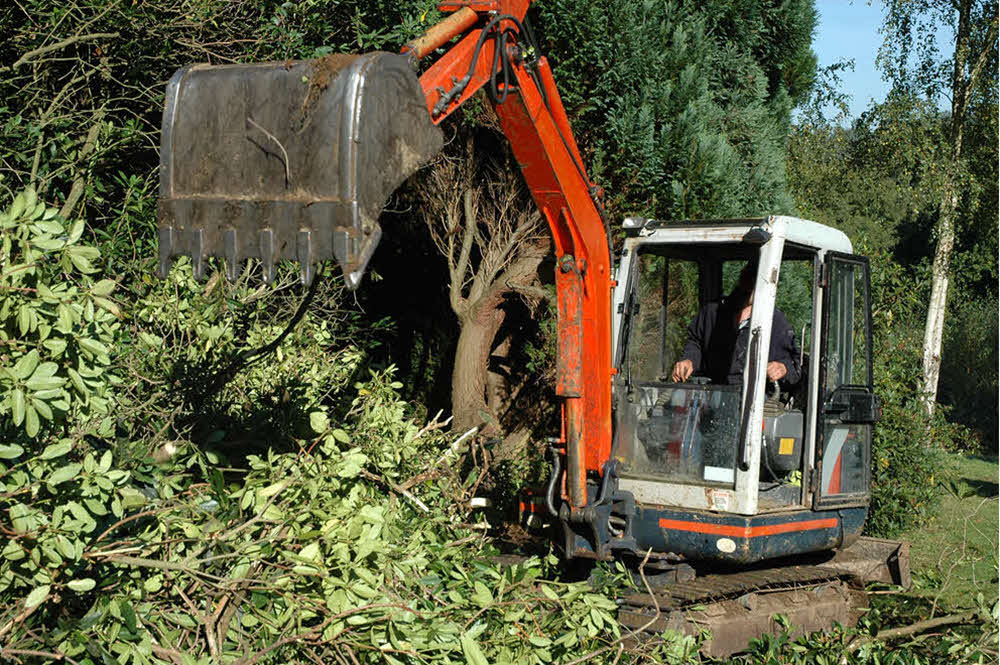Brush Clearing Servicesin Center Line MI
Rapid Brush Clearing Services to Prepare Your Property Fast
We Are Locally Owned & Operated For Over 37 Years
Contact Us Today!
We Serve Businesses In And Around The Following Cities:
About Brush Clearing Services
Introduction
Brush clearing – though often overlooked, it plays an indispensable role in the maintenance and growth of commercial properties in Center Line. It’s more than merely enhancing aesthetic appeal. It’s about safety, property value enhancement, and even the eco-balance. If you run a business or manage a commercial property in Center Line and ‘brush clearing near me’ is in your recent search history, this guide is for you. It provides a comprehensive understanding of this essential process, benefits and practical applications, some of which might be less known but are nonetheless critical.
Understanding the Brush Clearing Process
The initial steps include evaluation of the space, identifying potential risks, and planning the clearing. Specialized machinery such as a brush and land clearing skid steer are employed to clear the land and remove debris. Small trees and thick bushes are often mulched or removed entirely. In addition to clearing brush and small trees, stumps are uprooted, and the ground is leveled. This might not always sound like an enormous task, but any brush clearing service near you will vouch for the technicality and the effort it demands.
These services might sometimes come with additional variations such as brush cutting services or brush and tree clearing, based on the land and its requirements. Contractors like D&J Contracting vie to offer these hassle-free services as part of their brush clearing packages. However, the specifics of these services are entirely context-dependent, so it’s crucial that you check with the service provider.
Real World Applications of Brush Clearing
Brush clearing services in Center Line are not confined to commercial space grooming; they find applications in fire safety, environmental preservation, pest control, and even urban planning. Clearing overgrown brush reduces the risk of spreading fires, especially during summer months. It also controls pests and invasive species, maintaining a healthy ecosystem balance. When a new commercial infrastructure is planned, brush clearing is one of the first steps to set the ground.
Local examples are never far away. Consider how clearing trees and brush transformed an overgrown lot into a bustling retail center in downtown Center Line. Or how clearing backyard brush of a restaurant allowed for an eye-catching outdoor dining experience. These are not just cosmetic enhancements but investments that provide tangible benefits over time.
Choosing the Right Brush Clearing Service
Whether you are looking for ‘brush clearing companies near me’ or ‘brush clearing contractors near me,’ there are a few key aspects that need consideration. The reliability, efficiency and transparency of the service, as well as the value for your investment. Other factors include response time, environmental impact, and the ability to comply with the local laws and permits.
It is a good practice to check for reviews and testimonials from other local businesses using terms like ‘brush clearing cost,’ ‘brush clearing prices,’ or ‘brush clearing business in Center Line.’ Businesses with trust-based relationships are generally more reliable in delivering accurate estimates and on-time completion. Among the leaders in the sector, D&J Contracting is renowned for its reliable and efficient services, having built its business ground-up with an unerring focus on customer satisfaction.
The Impact of Brush Clearing on Property Value
Brush clearing, from an investment standpoint, is essential to increase or maintain property value. An unkempt property can deter potential customers or depreciate the property’s attractiveness to tenants and investors, affecting its market value. Land cleared of invasive species, weeds, or potential fire hazards not only creates an appealing outdoors but also ensures the property’s safety, significantly boosting its commercial value.
As highlighted earlier, it’s more than a service—it’s a worthwhile investment. Companies like D&J Contracting understand its nuances and offer customized solutions, thereby making it a trusted name among brush clearing businesses in Center Line.
Brush clearing’s significance is often subdued until its absence becomes markedly noticeable, causing unwanted problems. Be it preventing fire hazards, pest control, or enhancing curb appeal for your business, brush clearing’s benefits are multi-tired. It is vital to team up with a reliable local service like D&J Contracting that has a comprehensive understanding of the sector and the locality’s nuances. It’s not just about clearing land today; it’s about securing your business’s future.
Brush Clearing Services Gallery


Call Us Today to receive your Free Quote for
Brush Clearing in Center Line
Serving: Center Line, Michigan

About Center Line, Michigan
Historically, the land that Center Line came to occupy was swamp and wilderness until the early nineteenth century. As land became scarce, French, German, Belgian, and Irish immigrants began clearing the forests and draining the swamps. Center Line was known as “Kunrod’s Corner” during the mid-nineteenth century. The theory is that the French named it “Center Line” because it was the middle of three Potawatomi trails from Fort Detroit to northern trading posts. The “center line” was the trail used from Detroit to Utica. The community received its initial start when Catholics decided to build a church so that they would not have to walk to St. Mary’s in Detroit for Sunday Mass. This church (St. Clement’s) was established in 1854 and attracted more Catholic settlers into the area. In 1863, the first general store was constructed by Joeseph Buechel. On July 19, 1878, Hieronymous Engelmann was the first postmaster, and he was succeeded in 1885 by Sophia Buechel. The “Centre Line” post office closed on July 31, 1906, and the name was restored to Center Line thereafter. In this era, street car tracks connected Detroit to Center Line along Van Dyke Road, and Ten Mile Road was the final stop of the street car. The village was incorporated in 1925 in the center of Warren Township, which is now the city of Warren, and was incorporated as a city in 1936.
Center Line is in southwestern Macomb County and is surrounded entirely by the city of Warren. It is 11 miles (18 km) north of downtown Detroit, 7 miles (11 km) west of St. Clair Shores, 6 miles (10 km) east of Royal Oak, and 11 miles (18 km) south of Utica. Interstate 696 runs along the northern edge of Center Line, with access from Exits 22 through 24. Highway M-53 (Van Dyke Avenue) runs north-south through the center of town, connecting Detroit and Utica.
According to the U.S. Census Bureau, the city of Center Line has a total area of 1.75 square miles (4.53 km), all land.
| Census | Pop. | Note | %± |
|---|---|---|---|
| 1930 | 2,604 | — | |
| 1940 | 3,198 | 22.8% | |
| 1950 | 7,659 | 139.5% | |
| 1960 | 10,164 | 32.7% | |
| 1970 | 10,379 | 2.1% | |
| 1980 | 9,293 | −10.5% | |
| 1990 | 9,026 | −2.9% | |
| 2000 | 8,531 | −5.5% | |
| 2010 | 8,257 | −3.2% | |
| 2020 | 8,552 | 3.6% | |
| U.S. Decennial Census | |||
As of the census of 2010, there were 8,257 people, 3,632 households, and 1,988 families residing in the city. The population density was 4,745.4 inhabitants per square mile (1,832.2/km). There were 3,920 housing units at an average density of 2,252.9 per square mile (869.8/km). The racial makeup of the city was 82.5% White, 12.0% African American, 0.4% Native American, 2.5% Asian, 0.1% from other races, and 2.5% from two or more races. Hispanic or Latino of any race were 1.7% of the population.
There were 3,632 households, of which 27.7% had children under the age of 18 living with them, 32.0% were married couples living together, 17.5% had a female householder with no husband present, 5.2% had a male householder with no wife present, and 45.3% were non-families. 40.2% of all households were made up of individuals, and 18.1% had someone living alone who was 65 years of age or older. The average household size was 2.22 and the average family size was 3.01.
The median age in the city was 41.2 years. 21.4% of residents were under the age of 18; 8.2% were between the ages of 18 and 24; 25.1% were from 25 to 44; 27.5% were from 45 to 64; and 17.7% were 65 years of age or older. The gender makeup of the city was 46.1% male and 53.9% female.
85.9% of residents 25 or older hold a high school degree. 10.8% of residents 25 or older hold a bachelor’s degree or higher. Median household income was $30,752. 21.3% of the population lives below the federal poverty line.
As of the census of 2000, there were 8,531 people, 3,821 households, and 2,074 families residing in the city. The population density was 4,912.6 inhabitants per square mile (1,896.8/km). There were 3,916 housing units at an average density of 2,255.0 per square mile (870.7/km). The racial makeup of the city was 93.82% White, 3.09% African American, 0.25% Native American, 1.01% Asian, 0.26% from other races, and 1.57% from two or more races. Hispanic or Latino of any race were 1.51% of the population.
There were 3,821 households, out of which 24.2% had children under the age of 18 living with them, 36.8% were married couples living together, 13.7% had a female householder with no husband present, and 45.7% were non-families. 40.9% of all households were made up of individuals, and 22.5% had someone living alone who was 65 years of age or older. The average household size was 2.18 and the average family size was 2.99.
In the city, the population was spread out, with 21.8% under the age of 18, 6.9% from 18 to 24, 28.5% from 25 to 44, 20.5% from 45 to 64, and 22.4% who were 65 years of age or older. The median age was 40 years. For every 100 females, there were 81.5 males. For every 100 females age 18 and over, there were 75.5 males.
The median income for a household in the city was $31,677, and the median income for a family was $47,241. Males had a median income of $39,947 versus $26,487 for females. The per capita income for the city was $19,066. About 10.6% of families and 13.3% of the population were below the poverty line, including 17.9% of those under age 18 and 14.4% of those age 65 or over.
Most Center Line residents are zoned to schools in Center Line Public Schools, including Center Line High School. A small portion of the city is in Van Dyke Public Schools, served by Lincoln High School.<
St. Clement Catholic School, of the Roman Catholic Archdiocese of Detroit, was in Center Line. It was established in 1857. It had 110 students in the 2009-2010 year, and then 12 teachers and 89 students in its final year, 2010-2011. The parish decided to close the school as a parish takes a greater share of the costs if the number of students is under 100.
The archdiocese operated St. Clement High School in Center Line. It closed in 2005. Macomb Christian Schools (MCS) occupied the old St. Clement High School building from 2017 until 2019, when MCS shutdown.
Call Us Today to receive your Free Quote for
Brush Clearing in Center Line
Related Services in Center Line, Michigan
We Serve Businesses In The Following Zip Codes:
48007, 48015, 48021, 48026, 48035, 48036, 48038, 48042, 48043, 48044, 48045, 48046, 48047, 48048, 48050, 48051, 48066, 48071, 48080, 48081, 48082, 48083, 48084, 48085, 48088, 48089, 48090, 48091, 48092, 48093, 48098, 48099, 48225, 48230, 48236, 48310, 48311, 48312, 48313, 48314, 48315, 48316, 48317, 48318, 48397